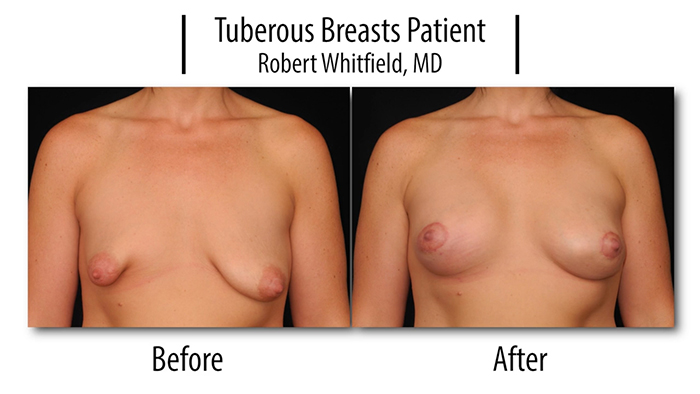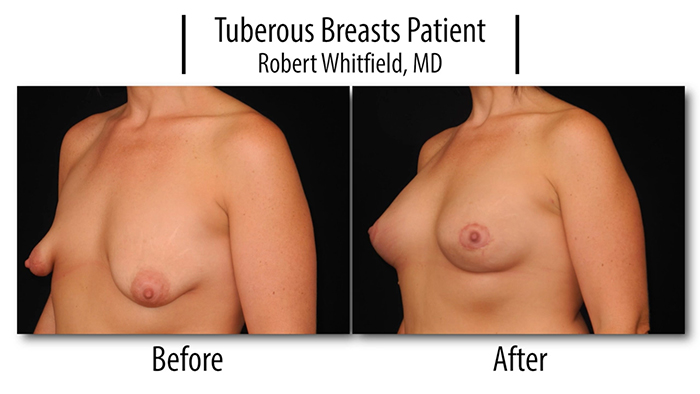Breasts come in all kinds of shapes and sizes, there is no ideal breast. But there are women and men who are unhappy with the way their breasts look. You may be diagnosed with a condition known as tubular breasts, or perhaps constricted breasts. There are treatments available to reshape the breasts. Dr. Robert Whitfield, who is a plastic surgeon discusses the latest options in implants.
by Dawn Tongish
and Robert Whitfield, MD
Tubular Breasts
Tuberous or tubular breasts can happen in both men and women and are the result of breasts failing to develop fully during puberty. It isn’t exactly clear why this happens, but there may be a genetic link. The condition is believed to affect a small portion of breast augmentation patients. (statistics are difficult to track because not everyone seeks surgery to repair) However, experts say more people are becoming aware of the condition. “We have had an increase in the number of patients coming into the office asking us about the appearance of their breasts,” says Dr. Robert Whitfield. Whitfield, a board-certified plastic surgeon with the Breast and Body Center in Austin, Texas says even if it isn’t a full flown tuberous breast condition, it is often bothersome enough to warrant treatment.
“Many of them don’t have a formal tuberous breast deformity where it’s contracted at the base and the nipple areola complex herniates through the back of the breast tissue, but they have some form of constriction or narrowing and it’s different side to side.” Whitfield says tuberous breasts are not just small or underdeveloped breasts. He says the condition can inhibit a women’s ability to breast feed. It does not appear to affect fertility.
Constricted Breasts
Women and men who suffer from constricted breasts are often very self-conscious about their breasts. Usually there is constriction along the lower pole of the breasts, causing some sagging. Often both breasts are affected, resulting in severely deformed breasts. In the past, management of tuberous breasts has been long and very difficult. New trends, techniques and devices are making solutions more promising. “We have a lot of new treatments to offer,” according to Dr. Whitfield. He says the new highly-cohesive silicone gel implant, Sientra 107 is making a difference.
“We can actually improve the overall cosmetic appearance of the breast. We can reduce the areola diameter and just make it smaller and more symmetric.” – Robert Whitfield, MD
New Breasts, New Attitude
The biggest obstacle for many women who suffer from tuberous or constricted breasts is overcoming the embarrassment. Having a surgery to “fix” the problem is a big part of developing a better body image. Reports say that even when surgical results aren’t perfect, the psychological benefits can be immense. “It can be a very stigmatizing thing to a young women to have a large areola and a small breast that is very narrow. I want to help women get past that and not feel self-conscious.”
Dr. Whitfield describes a downtrodden woman who came into his office with a deformed breast. She left a confident woman because of the physical changes to her body after receiving surgery. “She started off asymmetric. She had never been happy with her breast appearance. She never wore a swim suit. Then, we get this result using highly-cohesive, silicone gel implants, around the areola. Now, she wears whatever she wants. She is very happy now.”
















Facebook
Twitter
Instagram
YouTube
RSS